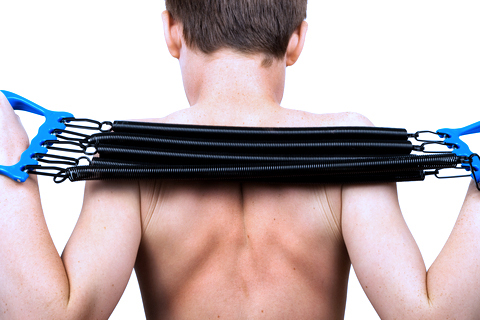How to Deliver Fitness Training to Children in 5 Easy Steps
by Matt Hodges
20 March 2015
Childhood obesity has become a serious problem in recent years. A 20-year King’s College London study of electronic health records, published online in Archives of Disease in Childhood has found that a third of children in England are overweight. So, what’s causing it. The main culprits are inactive lifestyles, junk food and fizzy drinks.
When a child is even a little bit overweight, it can have serious repercussions on their health – at worst, it can lead to type 2 diabetes, arthritic joints and hormonal imbalances. Without early action, these diseases can worsen over time, leading to long-term illnesses with severe side effects.
At The MPH Method, we are committed to fighting childhood obesity by encouraging children to be more active in their day to day lives – that means less time spent watching TV or playing video games, and more time spent playing team sports and other games.
We are also very aware that delivering fitness training to children is very different to training with adults. That being the case, we have devised our own tried and tested formula to make sure that young people get the most out of their fitness training, and develop good habits that will stay with them for life.
1. Have fun
Children have a short attention span, and they will quickly tire or repetitive, unimaginative exercises. But pitch their exercise as a game, and you can keep the child interested (and active) for much longer.
We always make sure that our young clients are excited about coming to see us, because they see exercise as playtime rather than a chore. Activities they undertake are generally cardiovascular (aerobic) and/or strength building (anaerobic) exercises. Circuit training is a good example – shuttle games incorporating ball control skills, are designed to promote overall fitness and develop coordination, agility and balance. To develop bone strength in children, activities such as jumping rope, skipping and hopping are useful, alongside running and power walking.
2. Variety
Whilst adults tend to zone in on one particular exercise that they love, children benefit from having a varied fitness regime. Not only does it keep them stimulated, it also helps to promote a good level of general health and fitness by working out different muscle groups.
3. Quality over quantity
There is such a thing as ‘bad’ exercise – performing the wrong motions on repeat can have a damaging effect on growing bodies. An activity that requires heavy weight lifting is something we’d always avoid. For children, exercises involving weights should focus on bodyweight callisthenic exercises, such as monkey bars, pull-ups and press-ups. These develop muscle strength and conditioning at a level that is age-appropriate. We make sure that each child’s workout regime is properly tailored to its particular needs and abilities.
4. Supervision
Workout injuries do happen, and they can be particularly upsetting for a child. We make sure that each child is closely supervised during their training, so that they can experience all the benefits and none of the risks associated with exercise. Our highly qualified trainers also work with the children to help them to perfect their exercise techniques, so that they can develop healthy workout skills for life.
5. Education
It’s not enough to simply tell a child to perform an exercise – they are going to want to know why. Young people are naturally inquisitive, so when we deliver fitness training to children we make sure to take the time to explain to them why certain exercises are beneficial, and what effect they are having on their bodies. This adds an extra dimension to their exercise regime and helps them to understand the importance of fitness and healthy living.
This article was written by Matt Hodges, you can see all his articles here.






